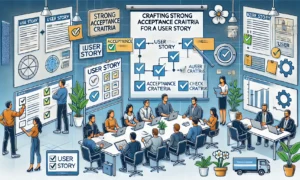In 2025, customer expectations will soar to unprecedented levels, reshaping the landscape of product management. To stay competitive, businesses must shift from product-focused to customer-centric strategies. This approach goes beyond meeting functional requirements—it’s about crafting products that solve real-world problems and deliver exceptional value.
The Essence of Customer-Centric Product Management
Customer-centric product management places the customer at the heart of every decision. By deeply understanding user needs, preferences, and pain points, businesses can create products that not only meet expectations but exceed them.
Core principles include:
- Empathy-Driven Design
- Understanding the emotional and practical needs of users.
- Building intuitive interfaces that foster a seamless user experience.
- Data-Driven Insights
- Analyzing user behavior and feedback to guide decision-making.
- Personalizing features based on customer segments.
- Feedback Loops
- Establishing continuous channels for user feedback.
- Iteratively refining products based on real-world use cases.
Why Customer-Centricity Will Matter More in 2025
1. The Experience Economy
By 2025, customer experience will surpass product features as the primary differentiator. PMs will need to focus on delighting users through holistic, end-to-end experiences.
2. The Rise of AI and Personalization
AI-powered tools will enable hyper-personalized products, tailoring solutions to individual needs. Customer-centric PMs must leverage these technologies to create bespoke experiences.
3. Increasing Competition
With barriers to entry lower than ever, competition will be fierce. Customer-centricity will be the key to building loyal user bases and standing out in crowded markets.
4. Sustainability and Ethical Design
Customers will increasingly favor products that align with their values, such as sustainability and inclusivity. PMs must consider these factors in their strategies.
Strategies for Customer-Centric Product Management in 2025
- Invest in Customer Research
- Use surveys, interviews, and focus groups to gather deep insights.
- Combine qualitative feedback with quantitative analytics.
- Adopt Agile Methodologies
- Embrace iterative development to incorporate feedback quickly.
- Focus on delivering incremental value to users.
- Collaborate Across Teams
- Align marketing, sales, and customer support teams to ensure a unified customer experience.
- Measure What Matters
- Track customer-centric metrics such as Net Promoter Score (NPS), Customer Satisfaction (CSAT), and retention rates.
The Future Is Customer-First
In 2025, customer-centric product management will no longer be optional—it will be essential. Businesses that fail to prioritize their customers risk falling behind, while those that embrace customer-centricity will unlock new opportunities for growth and innovation.
By building products that truly resonate with users, PMs can drive success in an increasingly customer-driven world.
Disclaimer
Posts in the Notebook are written by individual members and reflect personal insights or opinions. Please verify any information independently. If you have any concerns, notify the admin immediately so we can take action before any legal steps are taken.





